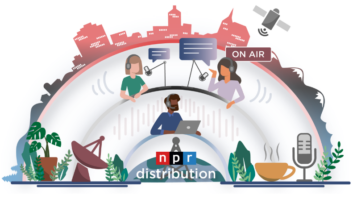Commercial station and other engineers have been asking questions about how NPR Labs conducted its IBOC coverage and predicted interference study.
To that end, John Kean has added new software to the NPR Labs computer program to count service and interference populations within the service contours, as well as to plot them on the maps. He planned to send these maps and population studies to the FCC and the NRSC shortly. The Corporation for Public Broadcasting, which funded the tests, originally wanted Kean to evaluate coverage and to consider interference, wherever it was practical, rather than within an artificial boundary, he said this week.
Also, in a presentation last week before the Association of Federal Communications Consulting Engineers, Kean said he vetted his study with several engineers before submission to CPB, including Dr. Paul McKenna of the Institute for Telecommunications Sciences in Boulder, Colo., and Doug Vernier, CPB’s consultant and the president of V-Soft; he also welcomes additional technical input.
Kean told me: “I’ve analyzed my interference models and have put together what I think is a manageable regulatory policy that balances the two requirements. This procedure not only would determine allowable power increases on the case-by-case basis, but would permit engineers to determine the effectiveness of other coverage improvements, such as split (directional) antennas for the IBOC transmission, separate transmitter sites for analog and IBOC, use of asymmetrical sideband powers (if practical), or ‘gap filler’ boosters to fill in weak IBOC coverage. I should stress the numbers I use in the examples are just for illustration, but they give us a chance to apply some real cases.”












